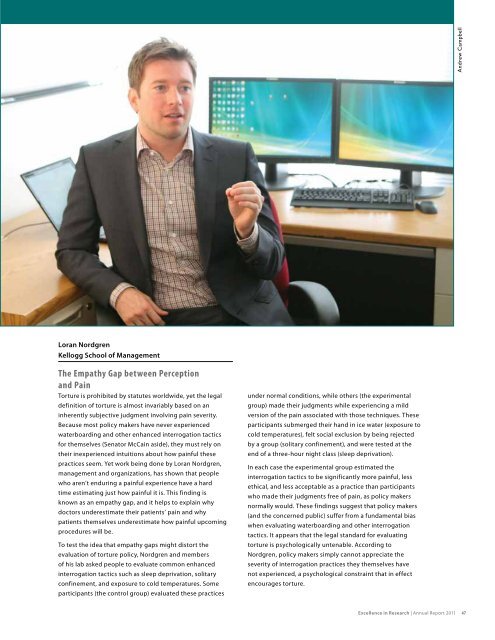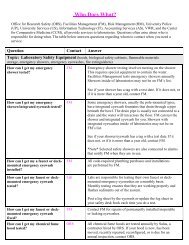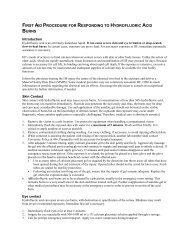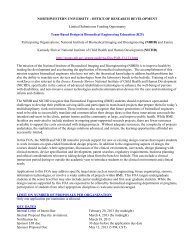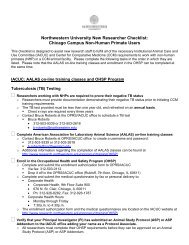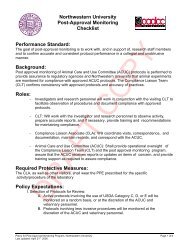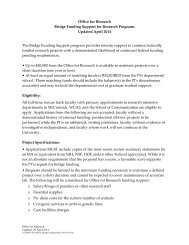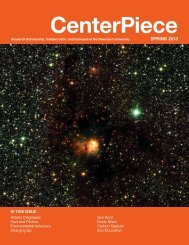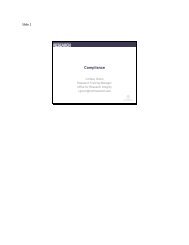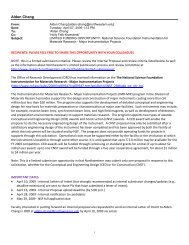annual report 2011 - Office for Research - Northwestern University
annual report 2011 - Office for Research - Northwestern University
annual report 2011 - Office for Research - Northwestern University
Create successful ePaper yourself
Turn your PDF publications into a flip-book with our unique Google optimized e-Paper software.
Loran Nordgren<br />
Kellogg School of Management<br />
The Empathy Gap between Perception<br />
and Pain<br />
Torture is prohibited by statutes worldwide, yet the legal<br />
definition of torture is almost invariably based on an<br />
inherently subjective judgment involving pain severity.<br />
Because most policy makers have never experienced<br />
waterboarding and other enhanced interrogation tactics<br />
<strong>for</strong> themselves (Senator McCain aside), they must rely on<br />
their inexperienced intuitions about how painful these<br />
practices seem. Yet work being done by Loran Nordgren,<br />
management and organizations, has shown that people<br />
who aren’t enduring a painful experience have a hard<br />
time estimating just how painful it is. This finding is<br />
known as an empathy gap, and it helps to explain why<br />
doctors underestimate their patients’ pain and why<br />
patients themselves underestimate how painful upcoming<br />
procedures will be.<br />
To test the idea that empathy gaps might distort the<br />
evaluation of torture policy, Nordgren and members<br />
of his lab asked people to evaluate common enhanced<br />
interrogation tactics such as sleep deprivation, solitary<br />
confinement, and exposure to cold temperatures. Some<br />
participants (the control group) evaluated these practices<br />
under normal conditions, while others (the experimental<br />
group) made their judgments while experiencing a mild<br />
version of the pain associated with those techniques. These<br />
participants submerged their hand in ice water (exposure to<br />
cold temperatures), felt social exclusion by being rejected<br />
by a group (solitary confinement), and were tested at the<br />
end of a three-hour night class (sleep deprivation).<br />
In each case the experimental group estimated the<br />
interrogation tactics to be significantly more painful, less<br />
ethical, and less acceptable as a practice than participants<br />
who made their judgments free of pain, as policy makers<br />
normally would. These findings suggest that policy makers<br />
(and the concerned public) suffer from a fundamental bias<br />
when evaluating waterboarding and other interrogation<br />
tactics. It appears that the legal standard <strong>for</strong> evaluating<br />
torture is psychologically untenable. According to<br />
Nordgren, policy makers simply cannot appreciate the<br />
severity of interrogation practices they themselves have<br />
not experienced, a psychological constraint that in effect<br />
encourages torture.<br />
Andrew Campbell<br />
Excellence in <strong>Research</strong> | Annual Report <strong>2011</strong> 47


